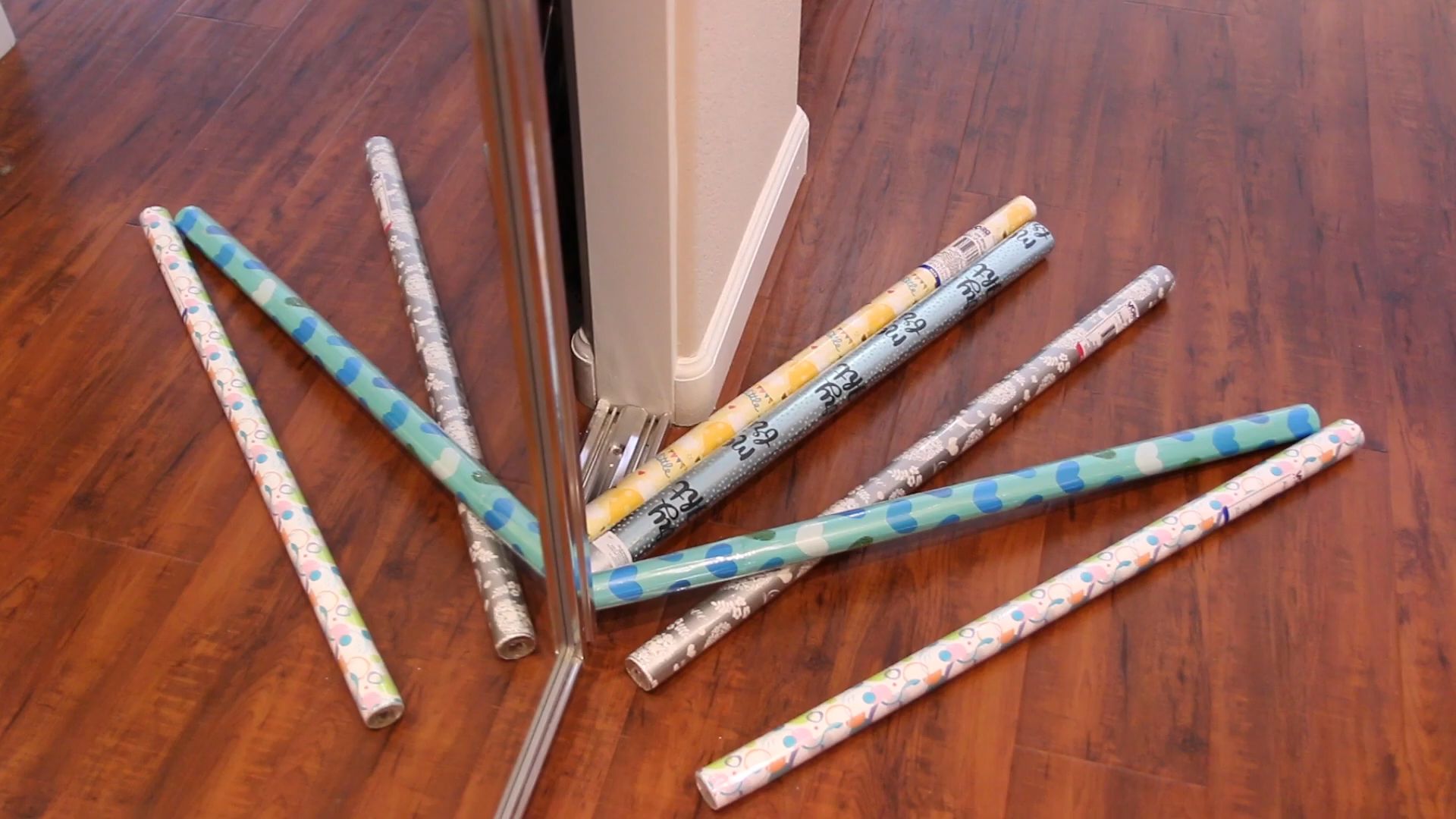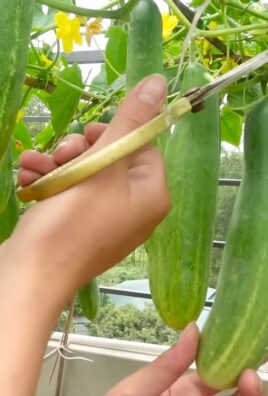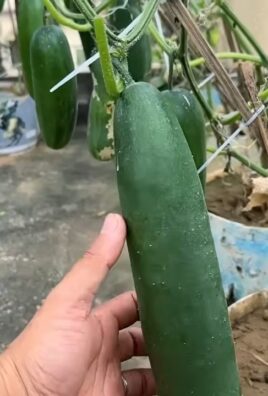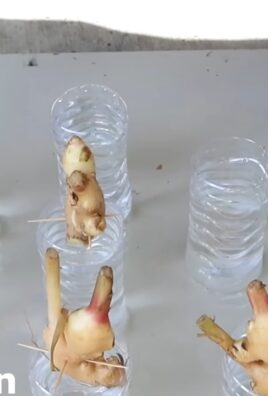Grow Lemongrass at Home and transform your kitchen into a fragrant, flavor-filled paradise! Have you ever dreamt of snipping fresh lemongrass straight from your garden for your favorite Thai curry or soothing herbal tea? Well, dream no more! This DIY guide will unlock the secrets to cultivating this versatile herb, even if you think you have a brown thumb.
Lemongrass, with its vibrant citrusy aroma, has been a staple in Asian cuisine and traditional medicine for centuries. Originating in Southeast Asia, it’s revered not only for its culinary uses but also for its potential health benefits, from aiding digestion to repelling pesky insects. But you don’t need to travel to the tropics to enjoy its goodness.
I know what you’re thinking: “Gardening is hard!” But trust me, growing lemongrass at home is surprisingly easy and rewarding. In today’s world, where fresh, healthy ingredients are more valued than ever, having a readily available supply of lemongrass is a game-changer. Plus, avoiding those wilted, overpriced stalks at the grocery store is a definite win! This DIY trick will save you money, reduce waste, and add a touch of exotic flair to your garden and your plate. So, let’s get started and learn how you can easily grow lemongrass at home!

Grow Your Own Lemongrass: A Beginner’s Guide
Hey there, fellow plant enthusiasts! Ever dreamt of having fresh lemongrass on hand for your favorite Thai curries or soothing teas? Well, dream no more! Growing lemongrass at home is surprisingly easy, and I’m here to guide you through every step. Trust me, even if you don’t have a green thumb, you can totally nail this.
What You’ll Need
Before we dive in, let’s gather our supplies. This is a pretty low-cost project, which is always a win!
* Lemongrass Stalks: You can usually find these at your local Asian grocery store or even some well-stocked supermarkets. Look for stalks that are firm, green at the top, and have a bulbous base.
* A Glass or Jar: Something tall enough to hold the lemongrass stalks upright with a few inches of water.
* Water: Tap water is fine, but filtered water is even better.
* Potting Soil: A well-draining potting mix is essential.
* A Pot: Choose a pot that’s at least 12 inches in diameter to give your lemongrass plenty of room to grow. Terracotta pots are great because they allow for good drainage.
* Optional: Rooting Hormone: This can help speed up the rooting process, but it’s not strictly necessary.
* Optional: Fertilizer: A balanced liquid fertilizer will give your lemongrass a boost once it’s established.
Section 1: Rooting Your Lemongrass Stalks
This is where the magic begins! We’re going to coax those lemongrass stalks into sprouting roots.
1. Prepare the Stalks: Gently peel away any dry or damaged outer layers from the base of the lemongrass stalks. You want to expose the fresh, healthy part of the stalk. Don’t be afraid to remove a few layers – it’s like giving them a little spa treatment!
2. Place in Water: Fill your glass or jar with a few inches of water. Place the lemongrass stalks in the water, making sure the base of the stalks is submerged. The green tops should be sticking out.
3. Find a Sunny Spot: Place the jar in a warm, sunny location. A windowsill that gets at least 6 hours of sunlight a day is ideal. Lemongrass loves sunshine!
4. Change the Water Regularly: Change the water every 1-2 days to keep it fresh and prevent bacteria from growing. This is super important for healthy root development.
5. Be Patient: It usually takes about 2-3 weeks for roots to start appearing. You’ll see small, white roots emerging from the base of the stalks. Don’t get discouraged if it takes a little longer – sometimes plants just need their own sweet time.
Section 2: Planting Your Rooted Lemongrass
Once your lemongrass has developed a good set of roots (at least an inch or two long), it’s time to move it to its permanent home in a pot.
1. Prepare the Pot: Fill your pot with well-draining potting soil, leaving about an inch of space at the top.
2. Create a Hole: Dig a hole in the center of the pot that’s large enough to accommodate the roots of your lemongrass.
3. Plant the Lemongrass: Gently remove the lemongrass stalks from the water and carefully place them in the hole. Make sure the roots are spread out and not bunched together.
4. Cover the Roots: Fill the hole with potting soil, gently pressing down to secure the lemongrass in place. The base of the stalks should be just above the soil line.
5. Water Thoroughly: Water the newly planted lemongrass thoroughly until water drains out of the bottom of the pot. This will help settle the soil and encourage root growth.
Section 3: Caring for Your Lemongrass
Now that your lemongrass is planted, it’s time to give it the TLC it needs to thrive.
1. Sunlight: Lemongrass needs at least 6 hours of sunlight per day. Place your pot in a sunny location, such as a patio, balcony, or sunny windowsill. If you live in a particularly hot climate, you might want to provide some afternoon shade to prevent the leaves from scorching.
2. Watering: Water your lemongrass regularly, especially during hot, dry weather. The soil should be consistently moist, but not soggy. Check the soil moisture by sticking your finger into the soil – if it feels dry an inch or two down, it’s time to water.
3. Fertilizing: Feed your lemongrass with a balanced liquid fertilizer every 2-3 weeks during the growing season (spring and summer). This will help it grow strong and healthy. Follow the instructions on the fertilizer label for proper dilution.
4. Pruning: Prune your lemongrass regularly to encourage new growth. You can harvest the stalks as needed for cooking or tea. To harvest, simply cut the stalks near the base of the plant. Don’t worry, it will grow back!
5. Overwintering: If you live in a climate with cold winters, you’ll need to bring your lemongrass indoors before the first frost. Place it in a sunny location and water it sparingly during the winter months. It might not grow much during this time, but it will survive until spring.
Troubleshooting
Even with the best care, you might encounter a few problems along the way. Here are some common issues and how to fix them:
* Yellowing Leaves: This can be caused by overwatering, underwatering, or lack of nutrients. Check the soil moisture and adjust your watering accordingly. If the soil is consistently moist, you might be overwatering. If the soil is dry, you need to water more often. You can also try fertilizing your lemongrass to provide it with the nutrients it needs.
* Brown Leaf Tips: This is often caused by dry air or inconsistent watering. Increase the humidity around your lemongrass by misting it regularly or placing a tray of water near the pot. Make sure you’re watering consistently and not letting the soil dry out completely.
* Slow Growth: This can be caused by lack of sunlight, poor soil, or lack of nutrients. Make sure your lemongrass is getting enough sunlight and that the soil is well-draining. Fertilize it regularly to provide it with the nutrients it needs.
Harvesting Your Lemongrass
The best part of growing your own lemongrass is, of course, harvesting it! You can start harvesting when the stalks are at least 1/2 inch thick.
1. Choose Your Stalks: Select the stalks you want to harvest. Look for the thickest, healthiest-looking stalks.
2. Cut the Stalks: Use a sharp knife to cut the stalks near the base of the plant.
3. Prepare for Use: Remove the tough outer layers of the stalk and use the tender inner part for cooking or tea. You can also freeze lemongrass stalks for later use.
Enjoy Your Homegrown Lemongrass!
And there you have it! You’ve successfully grown your own lemongrass at home. Now you can enjoy the fresh, citrusy flavor in all your favorite dishes and drinks. I hope you found this guide helpful. Happy gardening!

Conclusion
So, there you have it! Growing lemongrass at home is not only achievable, but it’s also incredibly rewarding. Imagine stepping into your kitchen and having fresh, fragrant lemongrass readily available for all your culinary adventures. No more last-minute trips to the grocery store or settling for dried substitutes that lack the vibrant zest of the real thing. This DIY trick transforms your kitchen into a haven of fresh ingredients.
But the benefits extend beyond mere convenience. By cultivating your own lemongrass, you’re embracing a more sustainable lifestyle, reducing your reliance on commercially grown produce and minimizing your carbon footprint. Plus, you have complete control over the growing process, ensuring that your lemongrass is free from harmful pesticides and chemicals.
This method of growing lemongrass at home is a game-changer for anyone who loves Southeast Asian cuisine or simply appreciates the refreshing aroma of this versatile herb. It’s a cost-effective way to enjoy a continuous supply of fresh lemongrass, and it’s a surprisingly easy project, even for novice gardeners.
Why is this a must-try? Because it empowers you to bring the flavors of the world into your own backyard (or windowsill!). It’s a simple, sustainable, and satisfying way to elevate your cooking and connect with nature.
Looking for variations? Consider experimenting with different containers. While a standard pot works perfectly well, you could also try using a repurposed bucket or even a raised garden bed for a larger lemongrass patch. You can also explore different lemongrass varieties. While the common Cymbopogon citratus is widely available, other varieties offer subtle variations in flavor and aroma.
Ready to take the plunge? We wholeheartedly encourage you to give this DIY trick a try. It’s a fun and fulfilling project that will reward you with a bounty of fresh lemongrass. Don’t be afraid to experiment and adapt the process to suit your own environment and preferences.
And most importantly, we want to hear about your experience! Share your successes, your challenges, and your tips in the comments below. Let’s create a community of lemongrass growers and inspire others to embark on this flavorful journey. Your insights could be invaluable to someone just starting out. So, grab your lemongrass stalks, get your hands dirty, and get ready to enjoy the unparalleled flavor of homegrown lemongrass!
Frequently Asked Questions (FAQ)
What is the best time of year to start growing lemongrass?
The best time to start growing lemongrass is in the spring or early summer, after the last frost. This gives the plant ample time to establish itself and grow strong roots before the colder months arrive. However, if you live in a warmer climate with mild winters, you can start growing lemongrass at any time of year. If you are starting indoors, you can start at any time, but be sure to provide adequate light.
How much sunlight does lemongrass need?
Lemongrass thrives in full sun, requiring at least 6-8 hours of direct sunlight per day. If you’re growing lemongrass indoors, place it near a sunny window or supplement with a grow light. Insufficient sunlight can lead to leggy growth and reduced flavor.
What type of soil is best for lemongrass?
Lemongrass prefers well-draining soil that is rich in organic matter. A loamy soil with a slightly acidic to neutral pH (6.0-7.0) is ideal. You can amend your soil with compost or other organic materials to improve drainage and fertility. Avoid heavy clay soils, as they can become waterlogged and hinder root growth.
How often should I water my lemongrass?
Lemongrass needs consistent moisture, especially during the growing season. Water deeply whenever the top inch of soil feels dry to the touch. Avoid overwatering, as this can lead to root rot. In the winter, reduce watering frequency, allowing the soil to dry out slightly between waterings.
How do I fertilize my lemongrass?
Feed your lemongrass regularly with a balanced fertilizer during the growing season. You can use a liquid fertilizer diluted to half strength or a slow-release granular fertilizer. Avoid over-fertilizing, as this can lead to excessive foliage growth at the expense of flavor. Organic options like compost tea or fish emulsion are also excellent choices.
When and how do I harvest lemongrass?
You can start harvesting lemongrass when the stalks are at least 1/2 inch thick at the base. To harvest, use a sharp knife to cut the stalks close to the ground. You can harvest individual stalks as needed, or you can harvest the entire plant at once. The outer, tougher layers of the stalk can be removed, leaving the tender inner core for cooking.
Can I grow lemongrass in a container?
Yes, lemongrass grows very well in containers. Choose a pot that is at least 12 inches in diameter to allow for adequate root growth. Make sure the pot has drainage holes to prevent waterlogging. Use a well-draining potting mix and follow the watering and fertilizing guidelines mentioned above.
How do I overwinter lemongrass in cold climates?
Lemongrass is not frost-hardy and will need to be protected during the winter in cold climates. You can either bring the plant indoors and grow it as a houseplant, or you can cut it back to a few inches above the soil and store it in a cool, dark place until spring. If you choose to store it, keep the soil slightly moist to prevent the roots from drying out completely.
My lemongrass is turning brown. What’s wrong?
Browning leaves can be caused by several factors, including underwatering, overwatering, nutrient deficiencies, or pest infestations. Check the soil moisture and adjust your watering accordingly. Fertilize the plant if it appears to be nutrient-deficient. Inspect the leaves for signs of pests, such as aphids or spider mites, and treat them accordingly.
Is lemongrass safe for pets?
While lemongrass is generally considered non-toxic to pets, it can cause digestive upset if ingested in large quantities. It’s best to keep lemongrass plants out of reach of pets to prevent them from nibbling on the leaves. If you suspect your pet has ingested a large amount of lemongrass, contact your veterinarian.
Can I propagate lemongrass from a stalk purchased at the grocery store?
Yes, that’s exactly what this article is about! You can propagate lemongrass from stalks purchased at the grocery store by placing them in water until they develop roots, then planting them in soil. Follow the steps outlined in the main article for best results.
How can I use my homegrown lemongrass?
The possibilities are endless! Lemongrass is a versatile herb that can be used in a wide variety of dishes, including soups, stews, curries, stir-fries, and teas. It can also be used to flavor marinades, sauces, and dressings. The fragrant stalks can be bruised and added to broths or stocks, while the tender inner core can be finely chopped and used as a seasoning. You can even use lemongrass to make refreshing beverages like lemongrass tea or lemonade.




Leave a Comment